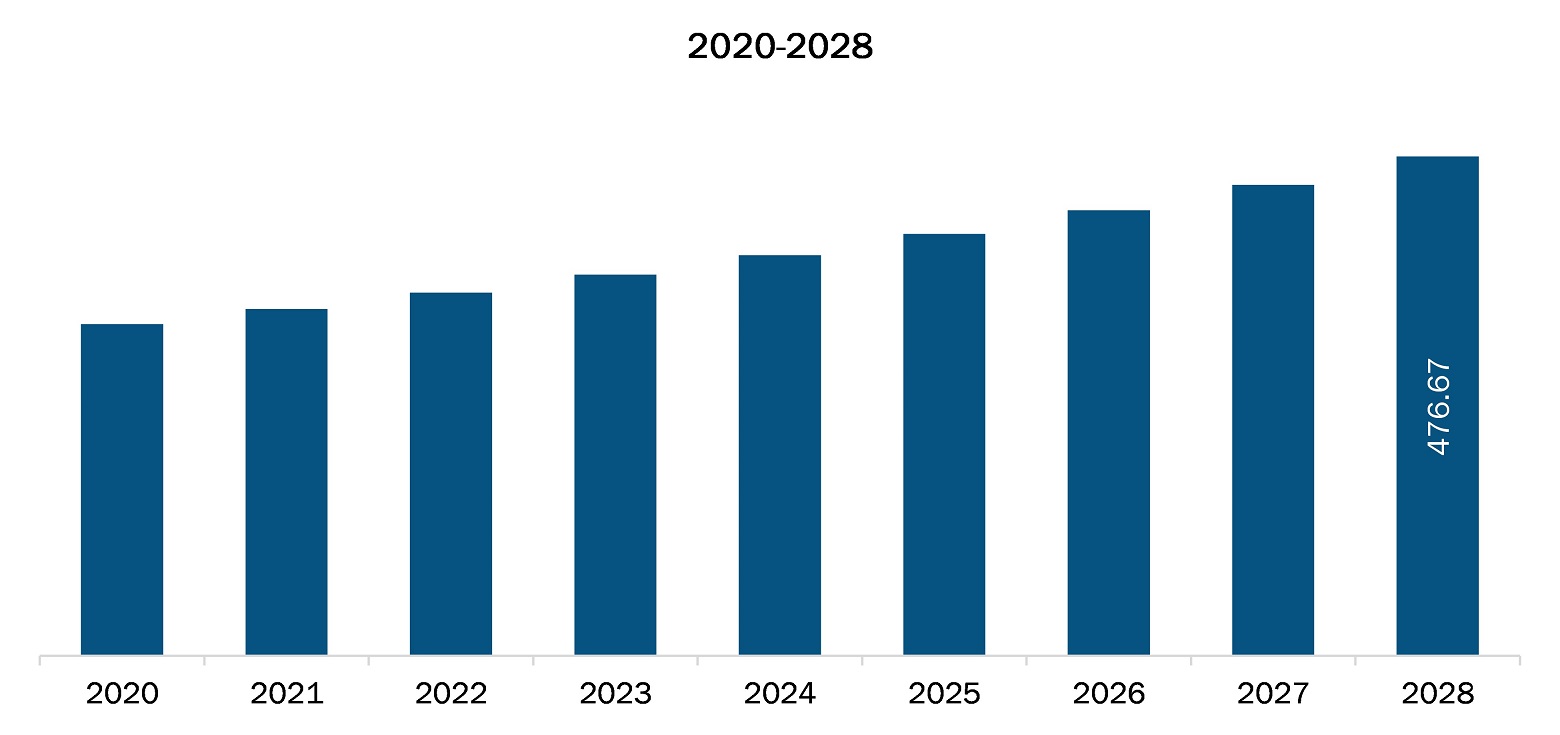The Asia Pacific colonoscopes market is expected to reach US$ 476.67 million by 2028 from US$ 331.09 million in 2021, it is estimated to grow at a CAGR of 5.3% from 2021 to 2028.
A few factors such as the increasing adoption of disposable colonoscopes, growing research activities to extend its applications in therapeutic areas, and development of robotic colonoscopes are driving the growth of the market. However, the availability of alternative diagnostic tests for rectal diseases hampers the market growth.
Early detection of colorectal cancer (CRC) in gastroenterology through national screening can cure a patient. However, there is still a significant variation in lesion detection via colonoscopy. The adenoma detection rate (ADR) is the gold standard for evaluating the quality of the endoscopist in screening for CRC. Improved ADR is driven by imaging technology, withdrawal technique, endoscopist knowledge, and motivation, as well as environmental and social factors. In endoscopy, AI broadly relates to computer vision technology, which allows computers to 'see' and interpret visual content. Through machine learning processes, and more recently, deep learning, AI systems can be trained to recognize 'normal' characteristics by linking a gold standard to suitable images. Using computer vision for lesion detection will be the first application of AI in gastroenterology. It will help to improve the quality of endoscopy practice in finding and recognizing polyps on colonoscopy. AI in colonoscopy is a new field with a new curriculum, but it can improve the quality of endoscopy and patient care. AI in endoscopy provides effective lesion detection and a valuable learning platform for the endoscopist. Hence the increasing adoption of AI in colonoscopy will change the management of performance and quality improvement in colonoscopy, with the potential to improve several key performance measures in future. Also, the rising adoption of disposable colonoscopes to avoid colonoscopy-related infections and complications propels the growth of the colonoscopes market.
The interruptions in the supply chain and the massive demand for efficient treatments for COVID-19 have put the health research industry in Asia Pacific in a crucial position. The COVID-19 pandemic has largely affected the economies in the region. Medical device manufacturers and suppliers are shifting their focus on developing and supplying COVID-19 essentials and medical devices for respiratory diseases. This scenario harms the market. The COVID-19 pandemic has also disrupted the spectrum of cancer care, including delaying diagnoses and treatment and halting clinical trials. In response, healthcare systems are rapidly reorganizing cancer services to ensure that patients continue to receive essential care while minimizing exposure to SARS-CoV-2 infection. Colon cancer (CRC) is one of the most common malignancies in Asia Pacific, and many countries in this region have introduced CRC screening for the population. Screening organizers coordinate with health authorities to work out how to manage screening residues, prioritize screening, and use modern technology to overcome potential barriers. Many new approaches such as the risk-stratified approach that considers personal CRC risk and local epidemic status and new digital technologies, are expected to play an important role in CRC screening in the future. During the pandemic, some facilities have also used at-home methods for CRC screening, such as fecal immunochemical testing (FIT) and multitarget stool DNA (mt-sDNA) tests, to help fill the gaps in screening. Hence, such factors would have a limited positive influence on the market growth in the coming years.

- This FREE sample will include data analysis, ranging from market trends to estimates and forecasts.
ASIA PACIFIC COLONOSCOPES MARKET SEGMENTATION
By Product Type
- Fiber Optic Colonoscopy Devices
- Video Colonoscopy Devices
By Application
- Colorectal Cancer
- Lynch Syndrome
- Ulcerative Colitis
- Crohn's Disease
- Polyp
By End User
- Hospitals
- Ambulatory Surgery Center
- Other End Users
By Country
- China
- Japan
- India
- Australia
- South Korea
- Rest of Asia Pacific
Company Profiles
- Fujifilm Corporation
- Olympus Corporation
- KARL STORZ SE & Co. KG
- PENTAX Medical
- Boston Scientific Corporation
- Ambu A/S
- SonoScape Medical Corp.
Asia Pacific Colonoscopes Report Scope
| Report Attribute | Details |
|---|---|
| Market size in 2021 | US$ 331.09 Million |
| Market Size by 2028 | US$ 476.67 Million |
| CAGR (2021 - 2028) | 5.3% |
| Historical Data | 2019-2020 |
| Forecast period | 2022-2028 |
| Segments Covered |
By Product Type
|
| Regions and Countries Covered |
Asia-Pacific
|
| Market leaders and key company profiles |
|
- Historical Analysis (2 Years), Base Year, Forecast (7 Years) with CAGR
- PEST and SWOT Analysis
- Market Size Value / Volume - Regional, Country
- Industry and Competitive Landscape
- Excel Dataset
Recent Reports
Testimonials
Reason to Buy
- Informed Decision-Making
- Understanding Market Dynamics
- Competitive Analysis
- Identifying Emerging Markets
- Customer Insights
- Market Forecasts
- Risk Mitigation
- Boosting Operational Efficiency
- Strategic Planning
- Investment Justification
- Tracking Industry Innovations
- Aligning with Regulatory Trends





















 Get Free Sample For
Get Free Sample For